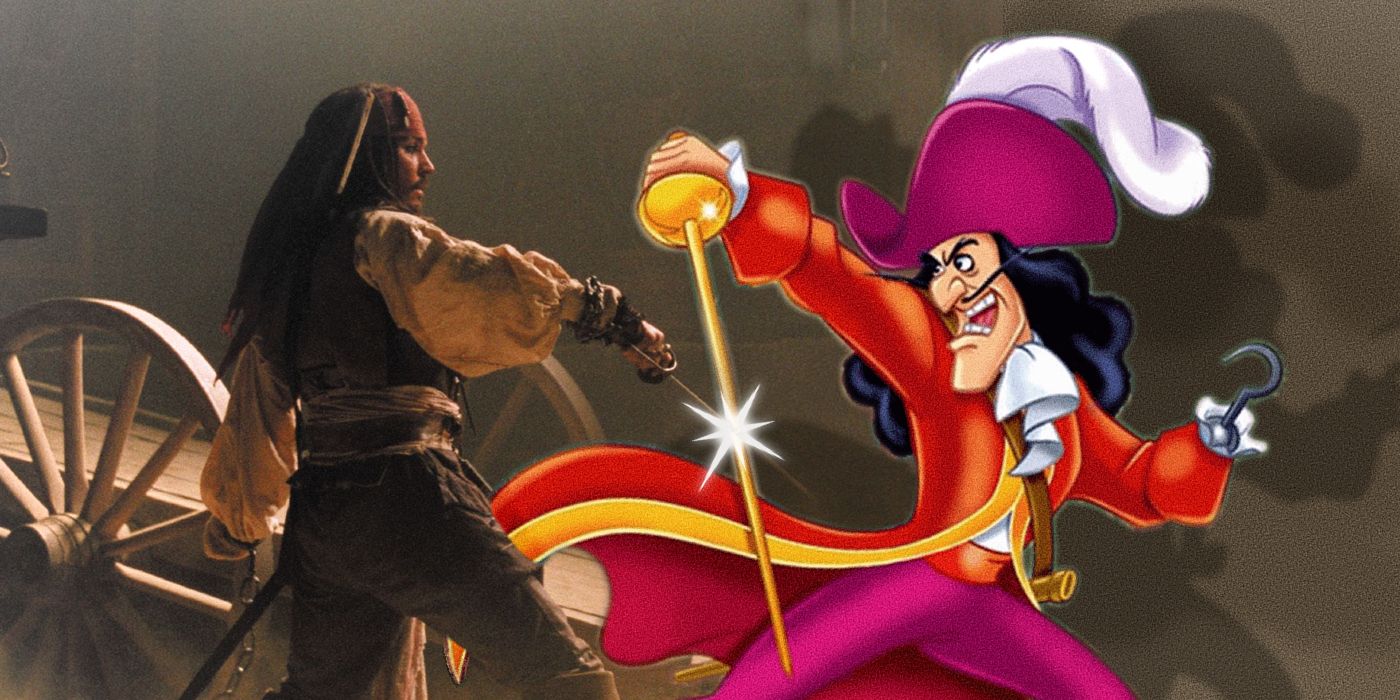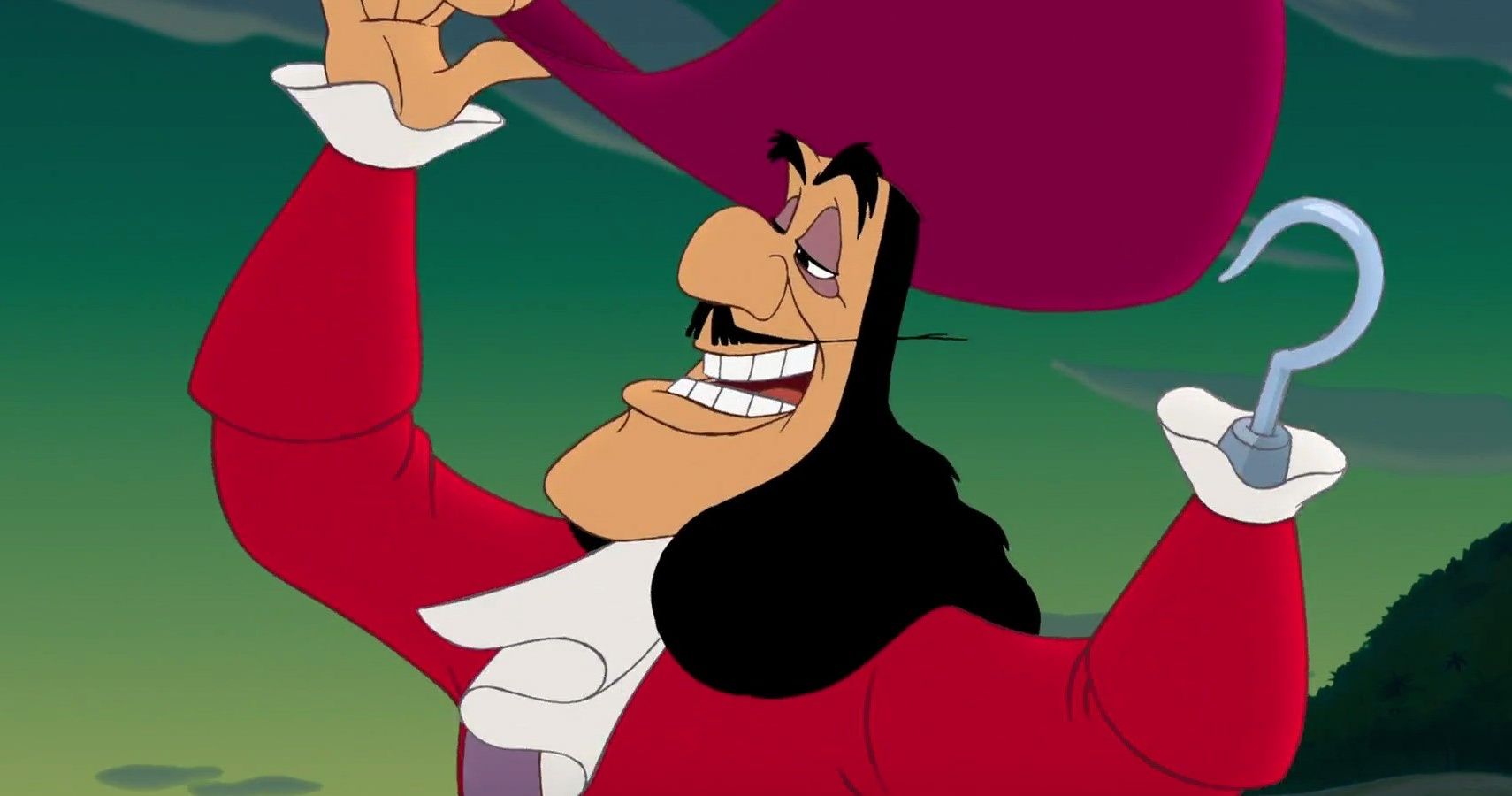Peter Pan’s Captain Hook has a hidden cameo role within the Pirates of the Caribbean franchise. Originally appearing in J. M. Barrie’s 1904 play (which later became a novel) Peter Pan; or, the Boy Who Wouldn’t Grow Up, Captain James Hook has menaced the titular Pan across a boatload of adaptations and reimaginings - becoming one of the most iconic villains of all time in the process. Out of said adaptations, Disney’s Peter Pan (1953) is the most widely remembered, with Hans Conried’s Hook often cited as the definitive version of the pirate captain on-screen.
Peter Pan isn't Disney’s only successful pirate property, however, with Pirates of the Caribbean: The Curse of the Black Pearl (based on a Disneyland water ride) proving a surprise hit in 2003 and launching a now-long-running franchise. The original Disneyland attraction, which opened in 1967, featured Hook and his assistant Smee in a promotional video, embarking on the new ride - a connection which would come full-circle with the release of Pirates of the Caribbean: The Price of Freedom in 2011, detailing Jack Sparrow’s early brushes with the East India Trading Company.
Written by sci-fi author A. C. Crispin, The Price of Freedom was billed as the first adult novel in the Pirates of the Caribbean franchise and contained in-universe references to Peter Pan’s Captain Hook. While Hook’s surname isn’t revealed in the book, pirates Don Rafael and Edward Teague (Jack Sparrow’s father) discuss an old acquaintance named James who matches Hook’s description: namely, that he’d disappeared for a while, lost a hand, been fitted with a hook, didn’t appear to age between meetings, and had developed a fear of children.
Hook’s “disappearance” can be chalked up to his time spent in Neverland (the magical island/alternative dimension featured in Peter Pan) - which also accounts for his apparent non-aging, since Neverland seems to exist on a plane in which time stands still. The hook is, obviously, Hook’s most identifiable attribute, and his fear of children is the result of his many conflicts with the Lost Boys (Peter’s tribe of child-warriors).
Curiously, Peter Pan features in-universe references to other pirates, both real and fictional, including Blackbeard (who also exists in the Pirates of the Caribbean universe, as played by Ian McShane) and Long John Silver from Robert Louis Stevenson’s Treasure Island, suggesting an informal shared universe. Now that Disney owns Lucasfilm, they could even incorporate the Monkey Island video games into such a world - though shared universes are quickly becoming overwhelming, with every franchise eager to stretch the boundaries of epic, long-form storytelling (for better and for worse).
That said, a trip to Neverland might be just what the Pirates franchise needs after years of worsening sequels. The implications of staying in Neverland for too long are something that ought to be explored more - presenting a wonderful opportunity for Disney to shift the series in a new direction. What if, for instance, Jack Sparrow and co. end up in Neverland but, when they eventually leave, the world has moved on without them? Piracy is dead and the Industrial Revolution is well underway, but the characters haven’t aged a day. Or, more dramatically, they could emerge in the middle of a World War. This would bring a fish-out-of-water quality to the narrative and a new set of tropes for the filmmakers to play with - fighting to re-establish Pirates of the Caribbean as a culturally relevant franchise, with its characters partaking in the exact same struggle on-screen.


